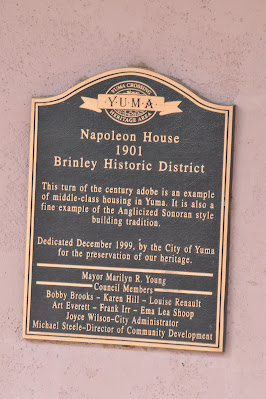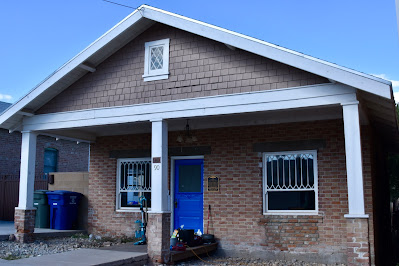Canadians, rat deterrents, eating out, genealogy, homelessness
At the RV resort where we are residing for the week, we have Canadians to the right of us, Canadians to the left of us, in fact, Canadians all around us. Last year when we were here, there were many from our northern neighbor, but since their covid restrictions have been lifted, they have returned en masse.
I tend to “interview” people I meet, out of interest and possibly as a habit formed during my newspaper days; fellow RVers are perfect targets for my curiosity, and who doesn’t like to talk about themselves. During a recent conversation, a mindset far different than mine came to light.
I began to discern a very different attitude with John & Jane, who reside temporarily in a very large motor home just to the rear of our dwarfed Wolf Pup. She has retired recently from nursing at a retirement home (interesting that some of us like working with “old people” and then we are them). She informs me that they don’t hike, swim, take classes or pretty much anything else that many folks do, so she’s bored whilst in residence here.
He must be pretty much the same, because he was plenty eager to join us at our “camp site” for an evening of visiting. The lifestyle mindset difference became evident when I inquired about his work career, which he has yet to leave behind.
He told us he is a farmer, at which I immediately formed a mental picture: farmhouse, silo, croplands surrounding, livestock pastures and pens, chickens in the farmyard. The reality is far removed from that.
The couple live in Medicine Hat, Alberta, and his (I say “his” because I am thinking she has never even visited it, much as if he worked in a factory) farm is about 100 miles distant. He goes out there for a day or several, sometimes a week, but continues to live in the city. It is a dryland grain farm with no livestock at all.
Working that distance away seems perfectly fine to him: the road is paved after all, he explained. As we compared various cultural opportunities, he said they have much of that available, also - at a distance of a mere 180 miles - good chance for a small vacay, he reckons! Sounds pretty daunting to take in a play, if you ask me.
It would be interesting to discover if their story is unique or commonplace in Canada.
Another point of some pride for Medicine Hattians(?) is the claim to being the sunniest locale in the country, and he's not very happy about his "patio" here being on the side that doesn't get morning rays. Seems odd to hear a Canadian complain about the lack of sunshine in Yuma, Arizona.
A mystery solved, homelessness . . .
I look forward to more conversation with another Albertan nearby, also a farmer, who seems to have a different story to tell. We became acquainted when he pinpointed the strange whining noise we all were hearing to our trailer. We heard it but had no idea it was emitting from beneath the Wolf Pup. Seems the subsonic pack rat deterrent we installed was malfunctioning and being a person deterrent with its irritating noise.
Continuing in the Canadian theme, I found that Medicine Hat, among other cities, has instituted a policy that claims to have virtually eliminated chronic homelessness there, being the first Canadian city to do so. They define it as "three or fewer individuals experiencing chronic homelessness in a community and that this has been sustained for three consecutive months".
Now for the mystery, one of a genealogical kind. Several years back, a geni client asked me to find information about her brother who died as a toddler before she was born. For ages, I was unable to obtain answers for her about that and inconsistencies in her family story; however, during our transition to Yuma, the years of searching brought answers.
Questions had centered around her parents' marriage, as well as about the baby, but when I discovered that New York City had digitized records and put them online, I was excited to see what I could learn.
It went like this: we had a newspaper account of their marriage in 1921, and their son was supposedly born in 1922, but an online index, notoriously unreliable, put the marriage in 1924. The mystery was solved when I found both their marriage certificate and the toddler's death certificate, although we are left to surmise why the sequence went down as it did.
So . . . the child was indeed born in 1922; however, the parents did not actually marry until 1924, despite the newspaper account. My client knew that her father had married previous to her mother. My deduction is that he couldn't wed my clients' mother before the child was born because he was still married to another woman, so the newspaper account was made to still gossip about the unwed couple having a child. And ouila! at last we have answers to questions she had for years.
Lunching out, historic sites . . .
Our intention to lunch at the Garden Cafe, which we loved on our last stop here, was deterred, it being a Sunday and only brunch was available, which would have set us back about $60, at which I balked. Those folks pointed us toward Yuma Landing Bar & Grill, and an excellent substitute it proved to be. The fisherman's platter was an awesome Sunday meal, leaving us impressed and satisfied, and the decor was fun. Here are the front doors and entrance hall.
Because we had walked the few blocks there, we appreciated the return through the Brinley Historic District, where I photographed a block of early 1900s adobe and brick houses and businesses . . .
. . . and a unique handsome structure at the end of the block.
We noted a few townie birds as we walked: collared dove, mourning dove and house sparrow. I would have thought to find white-winged doves here, but have not seen any yet.
As always, the brilliance of bougainvillea catches my eye.
Birdwatching along the Colorado . . .
We walked (a lot!) off our lunch along the Colorado River where it flows beneath the Yuma Territorial Prison, birdwatching and chatting with a young couple who had lived in Mazatlan and were running trails with their two Mexican rescue dogs complete with bells tinkling on their collars (the dogs' collars, that is).
We learned quite a bit from interpretive signs along the way. What at first we surmised were field roads traversing abandoned farm land were actually dikes crisscrossing wetlands. Because the controlled river flow no longer seasonally floods the adjoining flatlands, an extensive system has been set up to artificially flood the area and restore the wetlands. Much of it is so thickly vegetated as to be impenetrable.
These photos show one of the low dikes . . .
. . . and a portion of the control system that pumps water from the river.
Constructed canals and channels flow out to irrigate the wetlands.
The Colorado is much diminished and controlled as it nears its southern terminus, but is nevertheless beautiful and life-giving.
By far the most prevalent bird we spotted was yellow-rumped warbler: they were very numerous, just as in my Prescott back yard this winter. The only others that were new to the trip list were blue-gray gnatcatcher, ruby-crowned kinglet and verdin. We spotted a kestrel later out in the open country.
In the category of "What in hades is this?". . .
Don't remember ever seeing these seed pods before but there were plenty of them out there. For want of a proper name, I will call them chicken legs until someone corrects me.























































